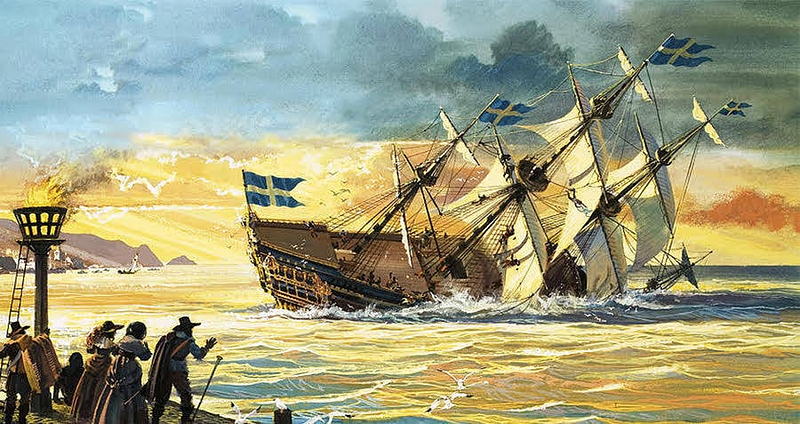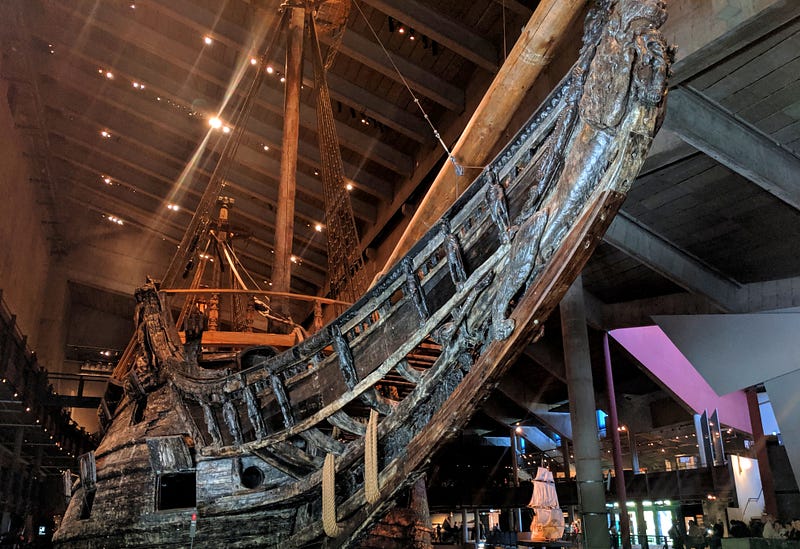Navigating UX Lessons from a 17th-Century Maritime Disaster
Written on
Chapter 1: The Vasa Disaster
The saga of the Vasa, a ship that tragically sank less than a mile into its maiden journey, serves as an important case study for UX professionals. This analysis delves into the organizational blunders that led to this maritime catastrophe and the crucial insights we can derive from it.

The Ship That Sailed Less Than A Mile (Source: Vasa Museum Stockholm)
The Sinking Event
On a brisk August morning in 1628, the atmosphere at Stockholm harbor buzzed with anticipation. The newly constructed warship, the Vasa, was poised for its first voyage. King Gustav Adolph II, surrounded by courtiers and crew, watched proudly as the ship took to the water. It was a magnificent creation, boasting grand masts and intricate carvings, representing the zenith of Swedish naval ambition.
However, as the Vasa ventured further from shore, disaster struck. The ship began to tilt dangerously, and within minutes, it capsized, a shocking turn of events that left onlookers horrified. While crew and passengers managed to escape, the ship itself was irretrievable. This incident didn't just spell ruin for the Vasa; it marred the reputation of the Swedish monarchy, transforming what was meant to be a symbol of national pride into a testament of failure.
Why Did It Fail?
The downfall of the Vasa highlights critical lessons about prioritizing superficiality over substance in product design, as well as the perils of inadequate collaboration during project execution. Let's dissect the elements that culminated in this maritime misadventure.
1. Leadership Errors (VPs)
In the 17th century, naval power symbolized national strength. Driven by the desire to showcase his dominance, King Gustav II Adolph was determined to construct a ship that would outshine all others. Consequently, construction of the Vasa began in 1625 as an impressive 111-ft vessel, but when the king learned of a rival Danish ship that was larger and more formidable, he insisted on altering the Vasa's dimensions to 135 feet, complete with a second gun deck—an unprecedented endeavor for Sweden.
As military pressures mounted, the king's insistence on rapid construction exacerbated the situation. His frequent changes to the ship's design and ornamentation added to the confusion, leading to an increasingly troubled project. While one might assume that the king was heavily involved, he only visited the site once throughout the entire process.
2. Design Flaws (UXDs)
Chief engineer Henrik Hybertsson made significant design errors in his pursuit of grandeur. Instead of crafting a new design, he merely scaled up an existing smaller ship, resulting in a vessel with an unstable top-heavy structure. The engineers failed to properly assess the center of gravity, which compounded the ship's instability. Moreover, the king's demands for additional heavy cannons on the upper decks exacerbated this issue.
Following Hybertsson's untimely death in 1627, the king's pressure on the design team intensified, leading to the inclusion of elaborate decorations that further compromised the ship's stability. The lack of coordination between teams, including those from Sweden and Amsterdam using different measurement standards, ultimately played a pivotal role in the Vasa's design flaws.
3. Research Gaps (UXRs)
Upon completion, the Vasa underwent a stability test, which raised immediate concerns. Admiral Fleming's "lurch" test involved 30 men running across the deck to simulate stress, but after just three rounds, the ship swayed perilously, leading to the test's abrupt halt. Despite these alarming results, the lack of a clear communication pathway meant that no one felt empowered to raise concerns about the ship's flaws. The silence that followed contributed directly to the Vasa's fate.
4. The Ill-Fated Launch (PMs)
The Vasa's much-anticipated launch became a public spectacle, with the king ordering all gun ports to be opened for a cannon salute. As the ship tilted in the wind, water rushed in through the open ports, quickly leading to its sinking. A more cautious approach—such as a private test with a smaller audience—might have allowed for the identification of critical issues before the full launch.
The same principle applies to modern product launches. A soft launch enables teams to gather feedback and make necessary adjustments, ensuring a more successful public rollout.
The Vasa's tragic story serves as a stark reminder of the pitfalls of poor prioritization, top-down mandates, and siloed operations—issues that continue to plague product design today.
Chapter 2: Modern Parallels
Just as King Gustav's decisions led to the Vasa's downfall, many UX leaders today fall into similar traps of setting unrealistic expectations. The failures of products like the BlackBerry Storm and Samsung Galaxy Note 7 demonstrate how a lack of collaboration can lead to disastrous outcomes. Moreover, the emphasis on aesthetics over functionality can ultimately harm a product's success—evident in cases like the Amazon Fire Phone.
In our contemporary landscape, it's common to witness products burdened with excessive features, often sacrificing usability for visual appeal. Like the Vasa, these products may look impressive externally, but fail to deliver internally.
The lesson from the Vasa's sinking is clear: it serves as a warning against the rush to impress at the expense of quality and stability. Products must be designed with an understanding of real-world use, ensuring that they can withstand the elements of market competition and user expectations.
Ultimately, UX professionals must cultivate open communication and collaboration within their teams, striking a balance between ambition and practicality. By doing so, we can create products that not only delight users but are also built on a solid foundation of quality and reliability.

The Vasa's Legacy
While the Vasa's sinking was undoubtedly a tragedy, it inadvertently provided invaluable lessons about leadership and product design that remain relevant today. The ship's recovery from shallow waters allows us to study its construction and the missteps that led to its demise.
In product design, the focus must not only be on features but also on achieving balance and ensuring quality. As we navigate the complexities of modern technology, it’s crucial to remain vigilant against the pitfalls of haste and ambition. Let us learn from the Vasa, ensuring our creations are not only visually stunning but also stable, functional, and ready for the challenges ahead.